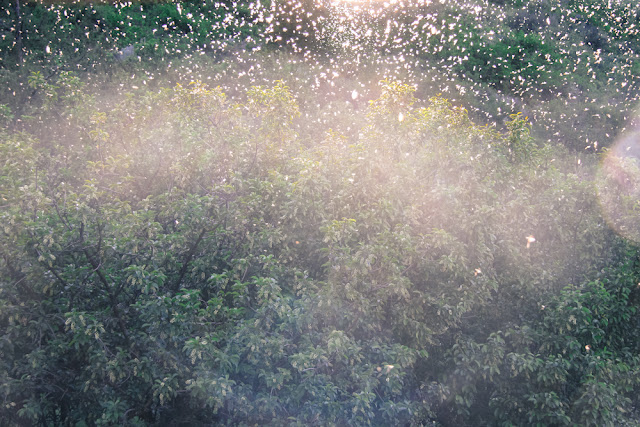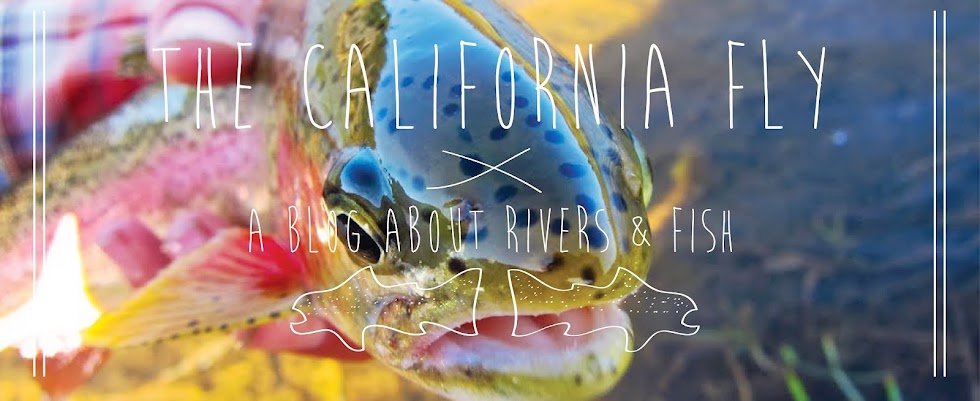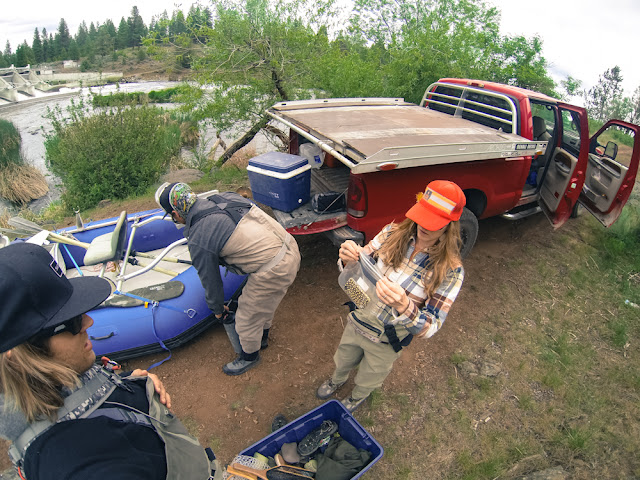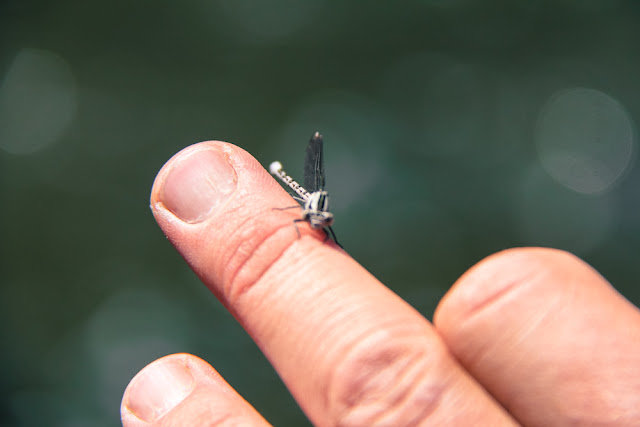As I preluded in the previous post, reading Cadillac Desert shortly after fishing a little known stretch of the legendary Klamath River has turned out to be a curious coincidence. Not because of any random happenstance, but mainly because I realized that my first time fishing the Klamath just happened to be smack dab in the midpoint of the Klamath River's life. Like meeting a new friend right after he just got married and popped out a kid, I knew the Klamath as I met it, was nothing like its first chunk of life and nothing like it was going to be in its next portion of life.
You know you've entered the Klamath basin when dams become the beginning and end of all dialogue. Hastily hand-drawn signs lean against mailbox posts spelling out, "Keep the Klamath", "Stop the Scams", "Restore the Klamath", "Remove the Dams" and the occasional "O-blah-blah-blah-ma". Even though the concrete structures are less Hoover and more Carter, their presence is unavoidable.
 |
Launching the boat into the warm chocolaty waters immediately brings to notice that these dams not only have stopped up one of the largest Salmon and Steelhead runs in the West but also but the trout that are in the water under constant pressure from above average water temps and low visibility. This makes the Spring time where the water is just the right temperature to make it just about the only friendly time to hook and release the trout that still live in the waters between the dams.

After getting through some tricky water we dropped the anchor in some midstream eddy's and started fishing. And then, someone switched on the "Fuck Yeah!" switch.
 |
 |
In the warm(er) waters of the Klamath, a close watch on making sure the fish is fully revived and back to complete swimming capability was a high priority. Releasing the fish healthy is half the battle of Catch and Release.
  |
| Note: Yeah this is two days of pics in one post, so the different hats aren't because of vanity. |
The Klamath's fish were found in water I've never quite fished before. Their mentality and survival among their difficult living conditions has made them adapt heavily. As you can see, some of them have adapted quite well.
After exiting the last tricky run we paddled across the extremely shallow flats of JC Boyle Dam Lake. Osprey's circled looking for any unlucky movers. Massive White Pelicans perched themselves among the rocks waiting for hapless fishy victims as well. In the distance gun fire popped and occasionally made us instinctively duck our heads as we skirted a recreational gun range. As we slowly moved on, Dave gave me a history lesson of the politics and struggles to bring down these inefficient, ineffective and useless dams. I'm not some greenie hippy wanting to tear down dams just to tear them down. I understand the necessity of water allocation, energy production and flood prevention for the good of human society. But there are dams across this country that were built for none of these reasons. Bureaucratic job security, political corruption, pork barrel politics and corporate welfare very often were the primary reason for a four decade long dam building frenzy. The Klamath dam removal project is backed by not only the usual conservation groups but the group that owns them, PacifiCorp There are many more backers from both sides of the aisle, including the builders of the dams themselves, the Federal Government. Only a minor few currently hold this restoration project up, mainly a few "No Hear-No See-No Do" Republican congressmen, a few lakeside homeowners worried about their property values and I'll take a wild guess that the specter of Dick Cheney is somehow involved aswell.
Ultimately there are lingering issues with water management that still need to be brought up for the restoration project, namely providing enough water for the humans in the area and the anadromous fish. But overall, the Klamath is a legendary river that unfortunately suffered under a bad side-effect of human society It's history is a mirror to our history of the development of the West coast and we have a chance to right some wrongs. I hope one day my kids will not only have the water they need to survive but the ability to land a Chinook Salmon in my homeland.
With that, I leave you with two pics of the most insane Mayfly hatch I've ever seen. Cheers,
Cody Townsend

















Hey Cody- I've been spending the past 5 years working on the relationship between dams, reservoirs, and water quality on the Klamath River. This is one of my favorite reaches to fish (although not to wade, I will admit). Thank you for writing about the Klamath, the "upside-down" river, as I call it... in my opinion, this is an extraordinary case where dam removal without proper consideration of pre-dam removal restoration efforts could really have some negative impacts on fish. Long-term, the dams need to come out to restore fish stocks... but not if upstream conditions remain business as usual. Current conditions upstream of Keno Dam are extremely hostile for anadromous fish and without proper consideration of how to ameliorate those conditions, fall-run fish don't stand a chance. Thanks again for great photos! - Allison
ReplyDeleteHey Allison, thanks for the read, comments and work that you're doing for this restoration project. Humbly inspired by people like you. All the best,
DeleteCT